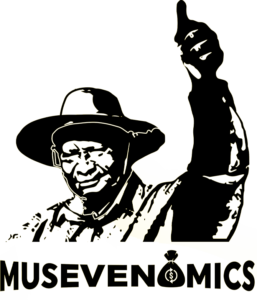The total economy- monetary and non –monetary had shrunk by 25% by1986 compared to1970 (collier and Reinikka, 2001).
In dollars, the size of GDP in 1986 was US$ 1.26 billion and that was the NRM entry point.
Certain principles or measures were applied to restore and revamp the small island of PSEUDO- MODERNITY, expand it and deepen its quality.
The following were the stimuli applied (Fundamental principles of Musevenomics)
1. Security of persons and property. The NRM government had heavily invested in a disciplined UPDF army, which espoused values of human rights, people freedoms and protection of persons and their property.
This played a significant role in attracting FDI net inflows from 0% of GDP in 1986 to 3.58 % in 2019.
2. Privatization and liberalization of markets. The NRM government liberalized forex bureaus, opened up all sectors of the economy to competition which created efficiency and stimulated high levels of production.
3. Return of Asian properties. The NRM government undertook to return the Asian properties, which significantly restored investor confidence with overwhelming in flow of FDI.
4. Diversification of Cash crops. The British colonial state had focused on production of cash crops namely cotton, coffee and tea. NRM government as a result, focus was put on maize, simsim, fish, flowers among others.
Through this diversification, the country increased foreign exchange earnings from $394M in 1986 to 2.43BN in 2020.
5. Market integration. NRM government sought to enhance markets and services, through spearheading regional blocks EAC, COMESA, AFCFTA, CFTA among others creating more demand.
6. Addressing the land question. In 1995, the NRM government undertook to restore this matter by recognizing the rights of bona fide tenants -owners of land purportedly given to land lords under British Colonial State strategy.
7. Introduction of UPE, USE and skilling of the population. The NRM government introduced a policy of free primary education (UPE), followed by free secondary education (USE). This has significantly improved literacy rate to the current 82% (MOES 2020).
8. Addressing the cost of doing business. The NRM government has since FY 2010/11 flag shipped works and transport and energy as major sectors of the economy. As a result, electricity generation has increased from 250MW in 1986 to the current 1,050MW (MoFPED 2020)
9. Monetizing the economy. The Ugandan economy has largely been agrarian with 68%of the population engaged in subsistence production- “producing from hand to mouth”. This has slowly reduced to 39% of the population engaged in subsistence sector (UBOS 2021).
10. Adopting ICTs. The NRM government embraced ICTs as a tool for transformation. There is a full Ministry for ICTs as well as separate agency-NITA (U) to spearhead ICT policy development in the country.







